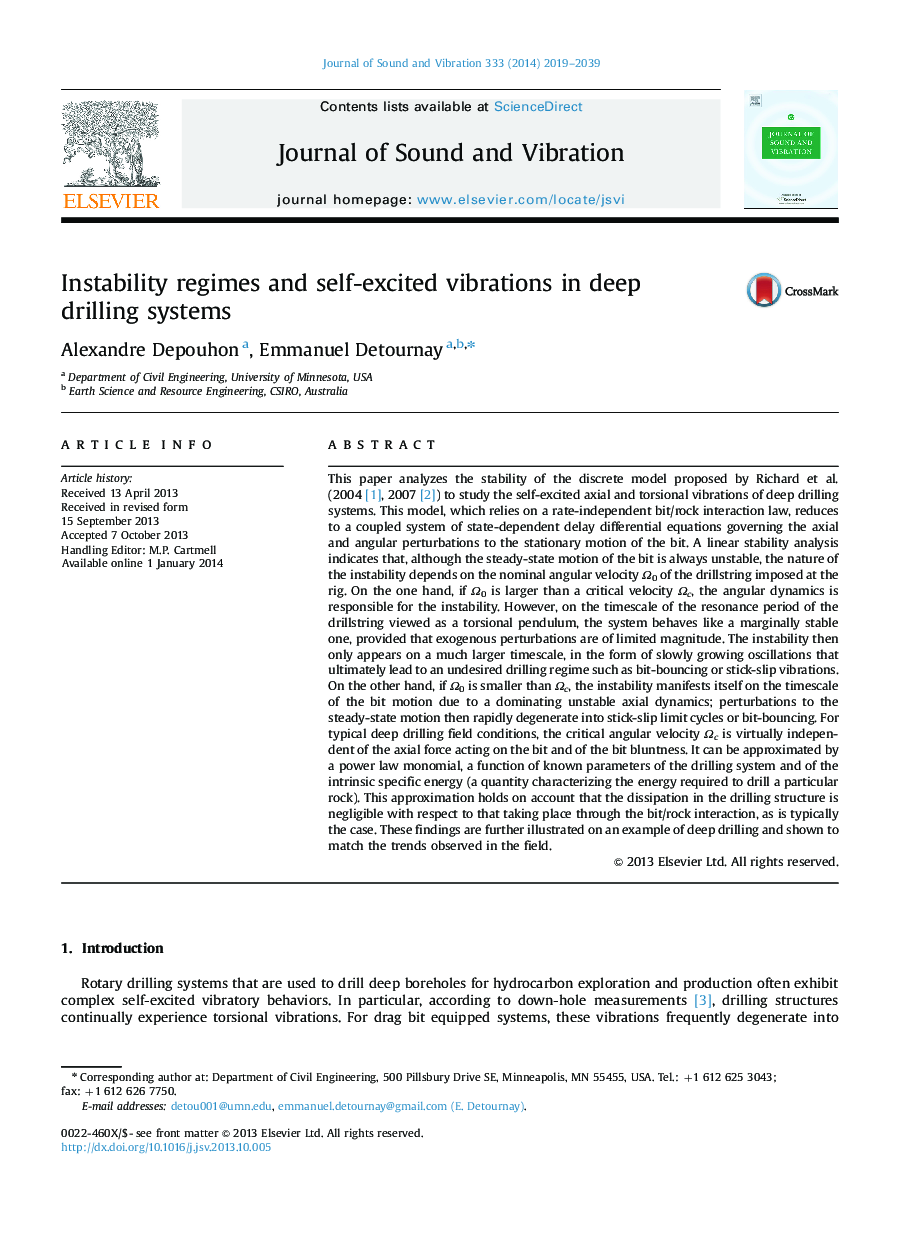| Article ID | Journal | Published Year | Pages | File Type |
|---|---|---|---|---|
| 287894 | Journal of Sound and Vibration | 2014 | 21 Pages |
This paper analyzes the stability of the discrete model proposed by Richard et al. (2004 [1], 2007 [2]) to study the self-excited axial and torsional vibrations of deep drilling systems. This model, which relies on a rate-independent bit/rock interaction law, reduces to a coupled system of state-dependent delay differential equations governing the axial and angular perturbations to the stationary motion of the bit. A linear stability analysis indicates that, although the steady-state motion of the bit is always unstable, the nature of the instability depends on the nominal angular velocity Ω0 of the drillstring imposed at the rig. On the one hand, if Ω0 is larger than a critical velocity Ωc, the angular dynamics is responsible for the instability. However, on the timescale of the resonance period of the drillstring viewed as a torsional pendulum, the system behaves like a marginally stable one, provided that exogenous perturbations are of limited magnitude. The instability then only appears on a much larger timescale, in the form of slowly growing oscillations that ultimately lead to an undesired drilling regime such as bit-bouncing or stick-slip vibrations. On the other hand, if Ω0 is smaller than Ωc, the instability manifests itself on the timescale of the bit motion due to a dominating unstable axial dynamics; perturbations to the steady-state motion then rapidly degenerate into stick-slip limit cycles or bit-bouncing. For typical deep drilling field conditions, the critical angular velocity Ωc is virtually independent of the axial force acting on the bit and of the bit bluntness. It can be approximated by a power law monomial, a function of known parameters of the drilling system and of the intrinsic specific energy (a quantity characterizing the energy required to drill a particular rock). This approximation holds on account that the dissipation in the drilling structure is negligible with respect to that taking place through the bit/rock interaction, as is typically the case. These findings are further illustrated on an example of deep drilling and shown to match the trends observed in the field.
